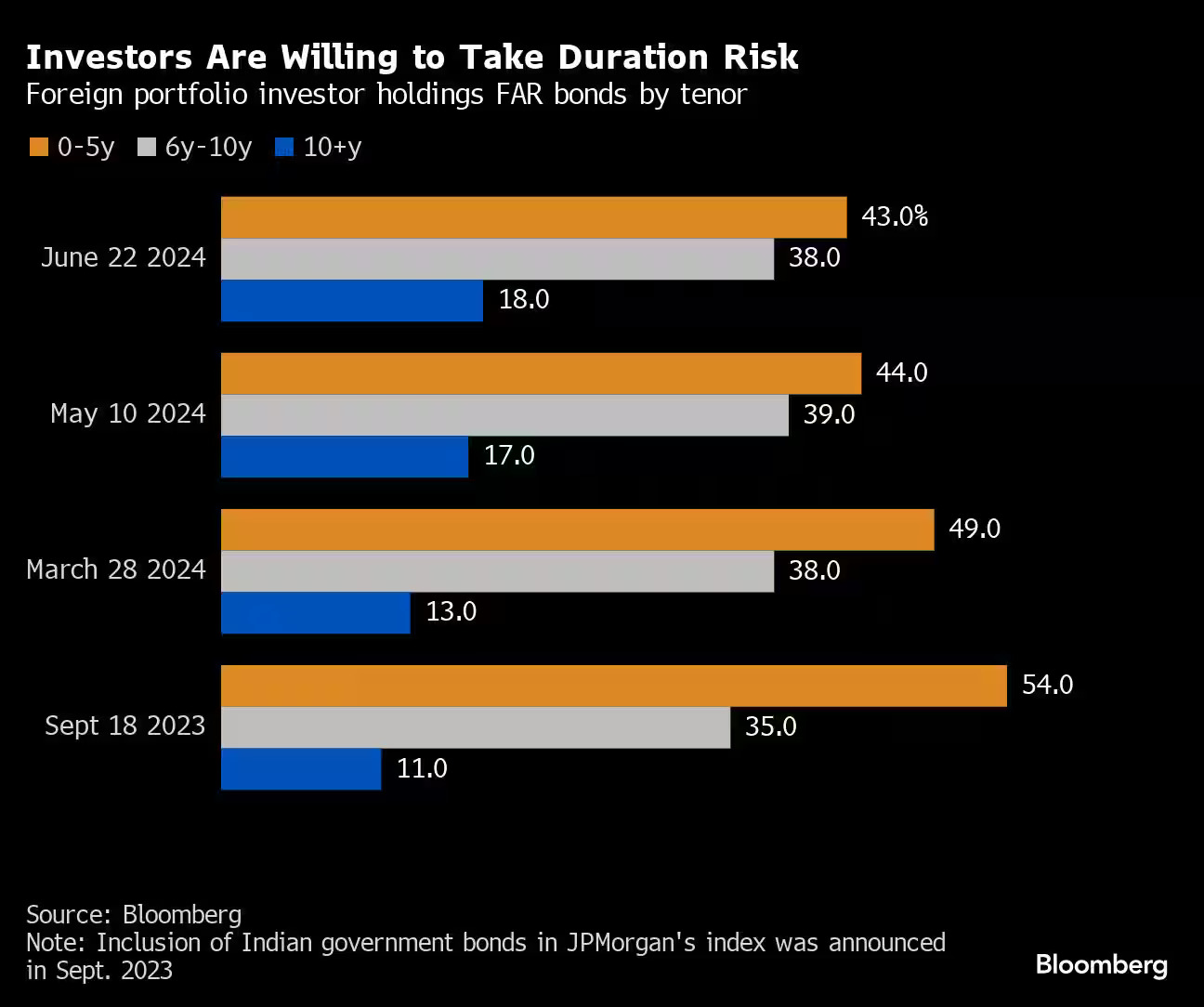Foreign investors strongly prefer India’s longer-dated bonds as the inclusion date in the JPMorgan Chase & Co. indexes nears. This strategic shift, driven by India’s stable economic outlook and high interest rates, is reshaping investment patterns in the region.
Current Investment Trends
Global funds have increased their bond holdings due in 10 years or more. This trend, at a nine-month high, marks a significant move away from short-dated securities.
Factors Driving the Shift
The Reserve Bank of India (RBI) has maintained high interest rates to combat inflation. This policy, combined with India’s stable currency and strong financial health, has made longer-dated bonds more attractive.
Impact of JPMorgan Chase & Co. Index Inclusion
The upcoming inclusion of Indian bonds in JPMorgan Chase & Co. indexes is expected to bring substantial capital inflows. Investors have already invested around $10 billion in eligible securities, with expectations of at least $30 billion more.
Expert Opinions
Prashant Singh from Neuberger Berman Group LLC highlights the 7 to 10-year bond duration as the sweet spot due to liquidity and yield curve shape. Major investors like Goldman Sachs and BlackRock also show bullish sentiments towards Indian bonds.
Risks and Challenges
Political risks are a significant concern. Prime Minister Narendra Modi’s coalition government might increase spending to gain political support, potentially leading to market volatility.
Economic Outlook
Fiscal policies are crucial. Bloomberg Economics predicts lower government borrowing, which could reduce 10-year yields and lower capital costs. Deutsche Bank foresees a budget deficit target of 5% of GDP, even with higher expenditure.
Comparison with Other Emerging Markets
India is becoming a preferred choice over China for global investors. Its stable currency and solid finances provide a reliable investment environment.
Potential for a Market Bubble
There are concerns about overvaluation and the risk of a market bubble. Investors must consider long-term sustainability when making decisions.
Investor Sentiments
Investors remain optimistic about India’s bond market. Wontae Kim from Western Asset Management Co. believes Modi’s fiscal policies will continue to drive market growth.
Future Projections
Short-term and long-term forecasts are positive. The market is expected to remain buoyant post-June 28, driven by continuous capital inflows.
Strategic Investment Recommendations
For optimal returns, investors should consider bonds with 7 to 10-year durations. Diversifying investments across different durations can also mitigate risks.
Key Economic Data Releases
Upcoming economic data, including CPI and industrial production figures, will significantly impact the bond market. Investors should stay informed to make timely decisions.
Read Also: Global Funds Shift to Longer-Term Indian Bonds
Conclusion
India’s longer-dated bonds are gaining favor among global investors as the JPMorgan Chase & Co. index inclusion date approaches. While the market outlook is positive, investors must remain aware of potential risks and strategically diversify their portfolios.
FAQs
Q1: Why are investors favoring longer-dated bonds in India?
Investors are attracted to India’s stable economic outlook and high interest rates, making longer-dated bonds more lucrative.
Q2: What impact will the JPMorgan index inclusion have?
The inclusion is expected to bring significant capital inflows, positively impacting bond prices.
Q3: What are the risks associated with investing in Indian bonds?
Political instability and potential market volatility are key risks.
Q4: How should investors approach bond investments in India?
Focusing on 7 to 10-year bonds and diversifying investments can optimize returns and mitigate risks.
Q5: What economic data should investors watch?
Key economic indicators like CPI and industrial production data will influence market dynamics.
















0 Comments